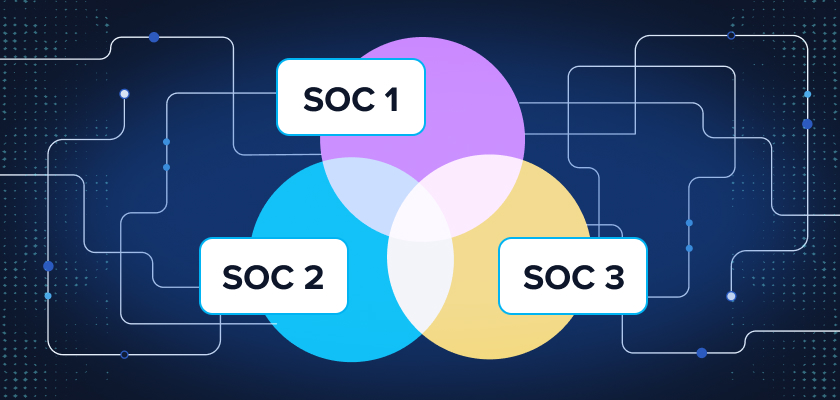
SOC 1 vs SOC 2 vs SOC 3: Choosing the Right Compliance Report
SOC reports help organizations prove the strength of their internal controls to customers, partners, auditors, and the public. But not all SOC reports serve the same purpose.
Developed by the AICPA, SOC 1, SOC 2, and SOC 3 each target different audiences and address different control areas, from financial reporting to security and privacy practices. Choosing the right report ensures you meet client expectations, streamline procurement processes, and build lasting trust.
What Are SOC Reports and Why Do They Matter?
SOC stands for System and Organization Controls. These reports were created to help service providers demonstrate the effectiveness of their internal controls to third parties.
They’re conducted by independent CPA firms and offer objective assurance that your organization meets key expectations in either financial reporting or data protection. SOC reports have become a standard part of due diligence, vendor management, and client onboarding across industries.
What Is SOC 1?
- Focus: Controls that affect financial reporting, known as Internal Controls over Financial Reporting (ICFR)
- Audience: Auditors, accountants, and financial stakeholders
- Use Case: Service providers that impact clients’ financial transactions or statements, such as payroll processors, billing platforms, or fintech SaaS providers
- Format: Available as Type I (design of controls) and Type II (operating effectiveness over time)
What Is SOC 2?
- Focus: Trust Services Criteria: Security, Availability, Confidentiality, Processing Integrity, and Privacy
- Audience: Customers, partners, procurement teams, and security officers
- Use Case: Ideal for SaaS companies, cloud platforms, MSPs, and IT service providers that manage or store customer data
- Format: Comes in both Type I and Type II formats
SOC 2 is the most requested report for technology and service providers operating in B2B markets.
What Is SOC 3?
- Focus: Same Trust Services Criteria as SOC 2
- Audience: General public
- Use Case: Organizations that want to publicly show proof of security and privacy practices without sharing sensitive internal details
- Format: SOC 3 reports are summary-level only and do not include audit findings or control specifics
SOC 3 is often used in marketing or posted on company websites as a trust signal.
SOC 1 vs SOC 2 vs SOC 3: Key Differences
| Feature | SOC 1 | SOC 2 | SOC 3 |
| Focus | Financial controls (ICFR) | Security, availability, confidentiality, etc. | Public summary of SOC 2 controls |
| Audience | Auditors, clients | Business customers, partners | General public |
| Detail Level | High | High | Summary only |
| Use Cases | Payroll, billing, financial platforms | SaaS, cloud services, MSPs, IT vendors | Public marketing, trust signaling |
| Type I & II? | Yes | Yes | No |
Which SOC Report Should You Pursue?
Choosing the correct SOC report depends on your services, clients, and goals.
Ask yourself:
- Do our services impact financial reporting?
→ Choose SOC 1 - Do we store, transmit, or manage customer data?
→ Choose SOC 2 - Do we want a public trust report without detailed controls?
→ Consider SOC 3 (paired with SOC 2)
FAQs About SOC 1, SOC 2, and SOC 3
SOC 1 is for financial controls; SOC 2 is for security and privacy-related controls.
Yes. SOC 3 is a summary-level report that can be publicly shared, making it suitable for websites and sales materials.
Yes. If your services impact both financial processes and handle sensitive data, clients may require both reports.
Prospects, customers, or the public, anyone looking for a high-level confirmation of your security posture without audit detail.